
Elephantopus carolinianus ( Leafy Elephant’s Foot) on 9-9-19, #627-1.
Elephant’s Foot, Carolina Elephant’s Foot, Leafy Elephant’s Foot
Elephantopus carolinianus
el-eh-fun-TOE-pus kair-oh-lin-ee-AN-us
Synonyms of Elephantopus carolinianus (5) )Updated on 11-30-23 from Plants of the World Online): Elephantopus carolinianus f. vestitus Fernald, Elephantopus carolinianus var. violaceus (Sch.Bip.) C.F.Baker, Elephantopus flexuosus Raf., Elephantopus scaber var. carolinianus (Raeusch.) Kuntze, Elephantopus violaceus Sch.Bip.
Elephantopus carolinianus Raeusch. is the accepted scientific name for this species of Elephantopus. It was named and described as such by Ernst Adolf Raeuschel in Nomenclator Botanicus in 1797.
The genus, Elephantopus L., was named and described as such by Carl von Linnaeus in Species Plantarum in 1753.
As of 11-30-23 when this page was last updated, Plants of the World Online by Kew lists 21 species in the genus Elephantopus. It is a member of the plant family Asteraceae with 1,702 genera. Those numbers could change as updates are made on POWO. The number of genera in the family fluctuates quite often.

Distribution map of Elephantopus carolinianus from Plants of the World Online. Facilitated by the Royal Botanic Gardens, Kew. Published on the Internet; http://www.plantsoftheworldonline.org/. Retrieved on March 16, 2020.
The above distribution map for Elephantopsis carolinianus is from Plants of the World Online. It shows where the species is native in green and where it has been introduced in purple. The map on the USDA Plants Database for North America is the same.
The map on iNaturalist shows where members have made observations. Anyone can join and it is a great website to confirm and share your observations. The maps on iNaturalist are continually updated as members post new observations.
THERE ARE SEVERAL LINKS AT THE BOTTOM OF THE PAGE FOR FURTHER READING AND BETTER POSITIVE ID.

Elephantopus carolinianus ( Leafy Elephant’s Foot) on 9-9-19, #627-2.
I remember it well… I was running down a wooded hillside toward a creek helping a friend herd cattle at his mother’s farm on September 9, 2019. She had sold the farm and the cows needed to be moved to another location. I had been on top of the hill admiring all the Perilla frutescens (Beefsteak Plant) that were growing by the thousands! I only have a few on my farm just a few miles away so I was amazed (somewhat). Anyway, the cows started coming so I had to bolt down the hill toward the creek. On the way down the hill, running fast as my 58-year-old legs would go, trying to run through the vegetation and vines, I almost tripped because I spotted a plant I hadn’t seen before. I didn’t have time to stop and look because I needed to head off the cows so they would go where we wanted them to instead of where they wanted to. You know what I am talking about if you have ever tried to drive cows… There is more to the story, but you can read about in the post I wrote, Elephantopus caroliniansis and Perilla frutescens Observed, on September 9.
Anyway, once the cows were where we needed them to be, I went back to the hillside to look for the plant and take photos (I remembered to take the camera). I found the plant I was looking for with no problem because there were a lot of them and I took a lot of photos. Later on, when I went back home I identified the plant as Elephantopsis caroliniansis.
Anyway, even though I first observed this plant and took these photos on September 9 (2019), I didn’t officially start writing this page until March 16, 2020. I usually use the winter months to catch up on writing and updating plant pages.

Elephantopus carolinianus ( Leafy Elephant’s Foot) on 9-9-19, #627-3.
The first plant I started taking photos of didn’t have any open flowers… Then I found some after I started looking around a bit.
Before I started using the drag-and-drop feature on iNaturalist, I was identifying the wildflowers I had found on the Missouri Plants website. Reading and understanding the botanical terminology then rewriting in my own words can be somewhat difficult. Click on the link and you will see what I mean.
COMPLICATED PLANTS DESERVE COMPLICATED DESCRIPTIONS…
I could easily say the plant stems end in a cluster of flowers but that wouldn’t do this plant justice. It is definitely a complicated plant that deserves a complicated description… One may choose to start from the ground up but I am sort of backward in that regard. I first take photos of the whole plant followed by the flowers, leaves then the stems. I never know how much knowledge about plant anatomy readers may have, so I may tend to think I have a lot of explaining to do. Actually, I have to explain it to myself first…
The flower stems end in a cluster of flower heads that are compact or unusually compressed. Close to the top of the stem is a leaf with another 3 1/2-4″ of stem above it. Then there are 3 leaves (foliaceous bracts) which the flower clusters sit on. Bracts and peduncles have short hairs.
A few terms you might see…
Bract=A leaf-like structure at the base of a flower or flower head.
Involucre=Series or set of bracts that surround a flower or cluster of flowers. Sometimes only one surrounds the whole cluster of flowers.
Phyllary=An involucral bract.
Peduncle=A single flower stalk.

Elephantopus carolinianus ( Leafy Elephant’s Foot) on 9-9-19, #627-4.
Hmmm… Let’s take a closer look. The above photo shows the three foliaceous bracts with a cluster of involucral bracts from which flowers emerge… An involucre is a bract (phyllary) or set of bracts (phyllaries) that surround a flower or cluster of flowers. In this case, I believe there is something a little strange going on…

Elephantopus carolinianus ( Leafy Elephant’s Foot) on 9-9-19, #627-5.
The above photo is of a plant with open flowers…

Elephantopus carolinianus ( Leafy Elephant’s Foot) on 9-9-19, #627-6.
The flowers are rather strange. Although this plant is a member of the Asteraceae (Composite) family, the flowers are not “daisy-like”. They only have disc flowers. I also find that strange because “disc” flowers are normally in the center and the “ray flowers” are what we think of as petals also known as florets. GEEZ!
Hmmm… Something is a bit odd…
In layman’s terms, Missouri Plants says the corollas (another name for petals) are lilac to whitish and are irregularly 5-lobed. The flower emerges from the phyllaries… WAIT A MINUTE! Take a closer look at that mass of petals… Something is weird!
How many flowers do you see? One? Count again… I see at least four.
I don’t mean four flowers in the entire photo… Of course, there are four. I mean how many do you see per flower… Each bract has a set of four loose phyllaries (actually 2 pairs of 2) in which 4-5 flowers emerge from. Have you ever seen a Fan Flower (Scaevola sp.) where the petals are on only on half the flower? I think that’s what is going on here…

Photo of a single involucre separated to reveal four flowers. This photo was retrieved from the Arkansas Native Plant Society website. The article, “Know Your Native’s-Carolina Elephant’s-Foot” was written and the photo was taken by ANPS member Sid Vogelpohl. Retrieved on March 16, 2020.
While I was looking for websites to link to this page for further reading, I found this great post on the Arkansas Native Plant Society site. You know what they say… A picture is worth a thousand words. The article was written by ANPS member Sid Vogelpohl and he also took the photos. This is a great post as are all the posts on their site…
As I mentioned and the above photo clearly shows, each involucral bract produces 2 sets of 2 phyllaries from which 4-5 flowers emerge. The flowers fit together making them appear there is only one.

Elephantopus carolinianus ( Leafy Elephant’s Foot) on 9-9-19, #627-7.
Lower leaves are quite large and “spatula-like”. One website says these lower leaves are 5″ long, but just guessing, I would say they are closer to at least 8″.

Elephantopus carolinianus ( Leafy Elephant’s Foot) on 9-9-19, #627-8.
The leaves grow in an “alternate” pattern along the stems and have no petioles (sessile-no stem). Missouri Plants says: “Alternate, sessile, elliptic to oblanceolate or spatulate, acute to acuminate, shallow serrate to crenate-serrate, slightly scabrous and pubescent below, sparse pubescent and shiny dark green above, to -30cm long, -10cm broad, tapering to base.” That is about 11″ long by about 4″ wide and the leaves attach directly to the stem with no petiole (sessile). Spatulate is a good word because the leaf could be considered like a spatula with a handle…

Elephantopus carolinianus ( Leafy Elephant’s Foot) on 9-9-19, #627-9.
The plant’s upper leaves are MUCH smaller and kind of oval in shape. Here you can see this leaf is what is meant when Missouri Plants says: “Peduncles subtended by a single foliaceous bract.” This leaf is where the “inflorescence” begins and is part of it as the “single foliaceous bract.” At least that is my opinion. Subtended means “under” so it makes sense.

Elephantopus carolinianus ( Leafy Elephant’s Foot) on 9-9-19, #627-10.
Besides a camera, I also need to remember to take the magnifying glass, a small notepad, and a pen… A field guide would also be promising. I haven’t normally been one to bring plants home from other locations, but I am really tempted with this one. I saw this plant again while I was helping Jay at either his farm or in the backyard of his mother’s (the one she sold). Apparently, this plant is fairly common in that neck of the woods.

Elephantopus carolinianus ( Leafy Elephant’s Foot) on 9-9-19, #627-11.
I think I read somewhere that the bracts contain a single seed that doesn’t fall out. The whole bract falls off with the seed still inside.
I was fairly busy during the summer in 2020 and didn’t do much wildflower hunting. Maybe I will find this species again somewhere in 2021. I will say, Elephantopsis carolinianus is one of the most interesting species I have ever run across.
<<<<2021>>>>
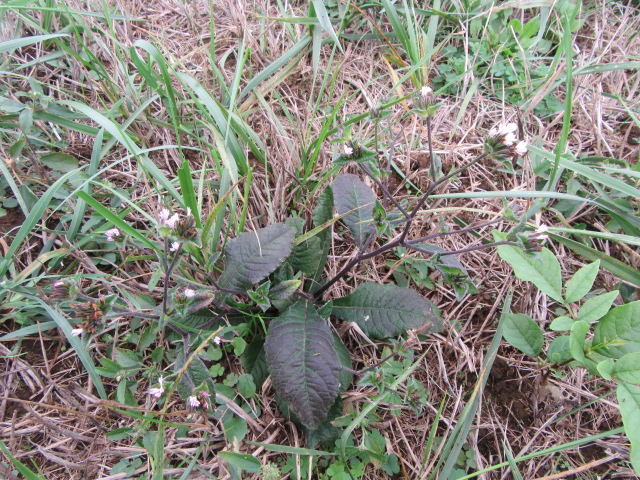
Elephantopus carolinianus (Leafy Elephant’s Foot) on 10-12-21, #843-9.
I was walking in the south hayfield in early October in 2021 and I noticed a plant with maroonish leaves. It had no flowers and I thought perhaps something was wrong with it because of the color of the leaves. I didn’t pay much attention to it at the time especially since I normally take photos of plants with flowers. Then, on October 12, I was walking through the middle of the south hayfield and I ran across another plant with maroonish leaves with flowers. I still thought the color of the leaves was a bit odd.
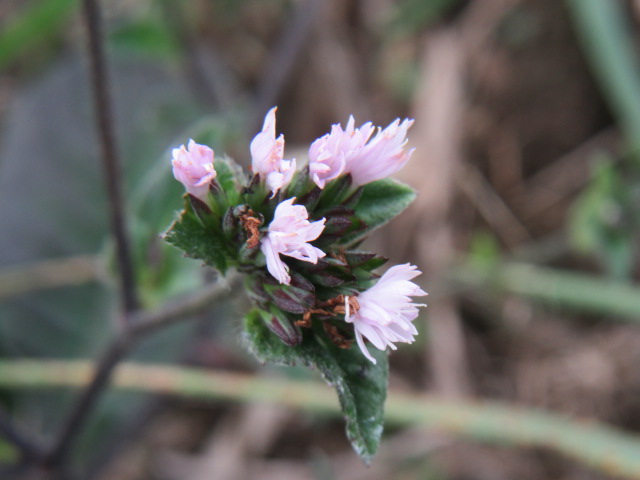
Elephantopus carolinianus (Leafy Elephant’s Foot) on 10-12-21, #843-10.
I didn’t recognize the plant from its flowers because they weren’t open at the time. Once I got back to the house and went through the photos, I uploaded most of the species I photographed on iNaturalist to record my observations. For this one, I thought I had found a different species so I uploaded the first photo and entered my location to see what was suggested. Hmmm… The ONLY species that was suggested was Elephantopsus carolinianus. I thought it was whacky! How could it be an Elephantopsus in the middle of the hayfield in full sun? SO, I uploaded the second photo and it said the same thing. Then a light came on! I have only seen those large leafy bracts and large spatulate leaves on one species… It was indeed an Elephantopsus carolinianus! I have Leafy Elephant’s Foot in the south hayfield. I was not expecting that and I thought they would have been in the wooded areas rather than in the sun.
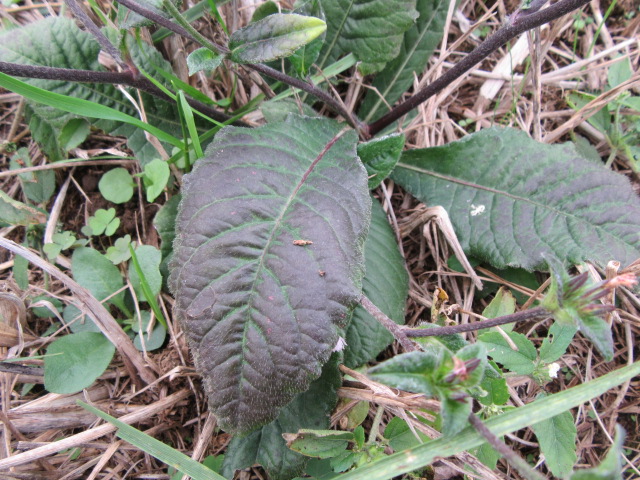
Elephantopus carolinianus (Leafy Elephant’s Foot) on 10-12-21, #843-11.
If I had taken a closer look at the basal leaves I may have realized what it was. Likely, they are a maroonish color because they are in the full sun instead of shade.

Elephantopus carolinianus (Leafy Elephant’s Foot) on 10-12-21, #843-12.
Sorry, this photo is somewhat blurry. I always take a lot of photos and weed out what I don’t want. Sometimes, I have to go out and take more later, which is what I will do. In this photo, though, you can see even the stems are a purplish color.

Elephantopus carolinianus (Leafy Elephant’s Foot) on 10-12-21, #843-13.
I will also have to go out again to see if the flowers will be open for a nice shot.

Elephantopus carolinianus (Leafy Elephant’s Foot) on 10-12-21, #843-14.
Well, it was great finding this species on my own farm even though it is in a spot I wouldn’t have thought it would be. A few days after I took the above photos, I decided to see if I could find it again. Finding a single plant in the middle of a hayfield could be very difficult but I went right to it. I forgot about needing a better photo of the stems, so I will have to try it again. 🙂
I went back to the area multiple times and could not find the plant again…
Then, on October 25…

Elephantopus carolinianus (Leafy Elephant’s Foot) at 37″ tall on 10-25-21, #852-4.
I was walking in the wooded area behind the pond in the back pasture and stumbled upon a plant that looked very suspicious. I looked around and found a bigger colony of plants. This is the first time I noticed this species in this area but I always thought it would be a good location for it. I looked for this species on my farm after finding it elsewhere in 2019 but there was none to be found. I have been back here since 2013 and found the plant in the south hayfield and now behind the pond is the first I have seen of it. Judging by the size of this colony, It has likely been here for a while and I just never noticed it. But it is odd how a new species just pops up…
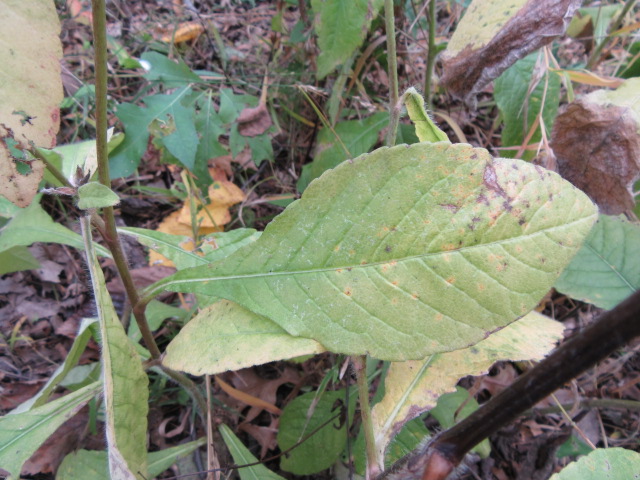
Elephantopus carolinianus (Leafy Elephant’s Foot) on 10-25-21, #852-5.
I checked the leaves, and sure enough, these plants are definitely Elephantopus carolinianus…
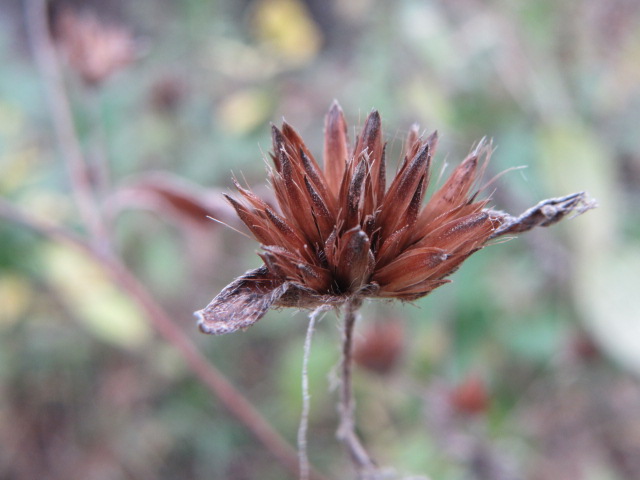
Elephantopus carolinianus (Leafy Elephant’s Foot) on 10-25-21, #852-6.
And we have seed… The bracts fall off rather than just the seed falling out.
I was very happy now to find a good-sized colony on my farm. This is a very interesting species for sure.
<<<<2022>>>>

Elephantopus carolinianus (Leafy Elephant’s Foot) on 4-27-22, #874-1.
Spring is a great time of the year and I am always anxious to see plants come up I have been watching. I was very glad to see the Elephantopus carolinianus coming up behind the pond where I found them in 2021… I had the spot marked.

Elephantopus carolinianus (Leafy Elephant’s Foot) on 5-12-22, #881-1.
They were coming along nicely by May 12…

Elephantopus carolinianus (Leafy Elephant’s Foot) on 5-28-22, #885-13.
They had grown A LOT by the end of May.

Elephantopus carolinianus (Leafy Elephant’s Foot) on 5-28-22, #885-14.
The location behind the pond under the trees was a perfect spot for the Elephantopus to thrive.

Elephantopus carolinianus (Leafy Elephant’s Foot) on 6-26-22, #896-18.
By June 26, the plants were looking great! The only problem with this area is getting to them. The area behind the pond grows up in hard-to-get-through vegetation AND poison ivy…

Elephantopus carolinianus (Leafy Elephant’s Foot) on 7-9-22, #898-1
On June 9, I thought I would have a look at the persimmon tree nearby. HOLY CRAP! There was a small colony of Epephantopus right under the persimmon tree. That’s AWESOME so I don’t have to fight my way to get to the colony behind the pond. They must have been here unnoticed for a few years. Normally, the only time I go to the persimmon tree is to eat. 🙂

Elephantopus carolinianus (Leafy Elephant’s Foot) on 7-9-22, #898-2.
The leaves of the Elephantopus carolinianus are pretty neat.

Elephantopus carolinianus (Leafy Elephant’s Foot) on 7-28-22, #902-9.
Now comes the waiting game for the flowers… The flower stems have shot up.

Elephantopus carolinianus (Leafy Elephant’s Foot) on 7-28-22, #902-10.
And waiting…

Elephantopus carolinianus (Leafy Elephant’s Foot) on 8-8-22, #903-8.
Finally, on August 8 there are a few flowers and a lot of buds.

Elephantopus carolinianus (Leafy Elephant’s Foot) on 8-8-22, #903-9.
The flowers were closed by the time I normally take photos in the late afternoon-early evening.

Elephantopus carolinianus (Leafy Elephant’s Foot) on 8-8-22, #903-10.
I am running out of words…

Elephantopus carolinianus (Leafy Elephant’s Foot) on 8-8-22, #903-11.

Elephantopus carolinianus (Leafy Elephant’s Foot) on 8-8-22, #903-12.

Elephantopus carolinianus (Leafy Elephant’s Foot) on 8-19-22, #905-1.
On August 19, I saw the plants were LOADED with flowers.

Elephantopus carolinianus (Leafy Elephant’s Foot) on 8-19-22, #905-2.
Unfortunately, they were already pretty much closed.

Elephantopus carolinianus (Leafy Elephant’s Foot) on 8-19-22, #905-3.
I was beginning to wonder about the time of the day.

Elephantopus carolinianus (Leafy Elephant’s Foot) on 8-19-22, #905-4.
The flowers must close in the afternoon. I checked the time I took the photos in 2019 and it was before noon. That means I have to go to the back of the farm around noon…

Elephantopus carolinianus (Leafy Elephant’s Foot) on 8-20-22, #906-1.
So, on August 20, I set out at about 12:30…

Elephantopus carolinianus (Leafy Elephant’s Foot) on 8-20-22, #906-2.
Lo and behold, the flowers were still open…

Elephantopus carolinianus (Leafy Elephant’s Foot) on 8-20-22, #906-3.
Now, that’s AWESOME! How many flowers do you see? Two or eight? 🙂

Elephantopus carolinianus (Leafy Elephant’s Foot) on 8-20-22, #906-4.
So, what I am doing is attempting to separate the flowers.

Elephantopus carolinianus (Leafy Elephant’s Foot) on 8-20-22, #906-5.
I had two options… Try to separate the flowers while still attached or pull them off the head. I wasn’t crazy about removing the flowers, so I just tried to “bend” them a little. That worked OK, but not that great. You can see in the above photo there are four flowers with six petals each. That is so neat!

Elephantopus carolinianus (Leafy Elephant’s Foot) on 8-20-22, #906-6.

Elephantopus carolinianus (Leafy Elephant’s Foot) on 8-20-22, #906-7.
Get a load of that leaf!

Elephantopus carolinianus (Leafy Elephant’s Foot) on 8-20-22, #906-8.
Very hairy stems…

Elephantopus carolinianus (Leafy Elephant’s Foot) on 8-20-22, #906-9.

Elephantopus carolinianus (Leafy Elephant’s Foot) on 8-20-22, #906-10.

Elephantopus carolinianus (Leafy Elephant’s Foot) on 8-20-22, #906-11.

Elephantopus carolinianus (Leafy Elephant’s Foot) on 8-20-22, #906-12.
I take a lot of photos in part to see if I can get better ones for this site. As they say, photos are worth a thousand words. The second reason is that I am a member of iNaturalist and I post all my observations on that site. I like to take a lot of photos of each observation so other members can better identify and confirm the species. Then the observation becomes research grade. It gets very addictive.
Likely, I will be taking plenty more photos of the Elephantopus. In time, photos will be moved around and some will be under the links below.
I have enjoyed photographing and learning about the many wildflowers growing on the farm in Windsor, Missouri in Pettis County (Henry County is across the street) and other areas. The city limits is across the street and the north and south side of the farm. I have grown over 500 different plants and identified over 250 species of wildflowers (most have pages listed on the right side of this site). I am not an expert, botanist, or horticulturalist. I just like growing, photographing and writing about my experience. I rely on several websites for ID and a horticulturalist I contact if I cannot figure them out. Wildflowers can be somewhat variable from location to location, so sometimes it gets a bit confusing. If you see I have made an error, please let me know so I can correct what I have written.
I hope you found this page useful and be sure to check the links below for more information. They were written by experts and provide much more information. If you can, I would appreciate it if you would click on the “Like” below and leave a comment. It helps us bloggers stay motivated. You can also send an email to me at thebelmontrooster@yahoo.com. I would enjoy hearing from you.
FOR FURTHER READING:
PLANTS OF THE WORLD ONLINE (GENUS/SPECIES)
INTERNATIONAL PLANT NAMES INDEX (GENUS/SPECIES)
TROPICOS (GENUS/SPECIES)
FLORA OF NORTH AMERICA (GENUS/SPECIES)
WORLD FLORA ONLINE (GENUS/SPECIES)
WIKIPEDIA (GENUS/SPECIES)
MISSOURI BOTANICAL GARDEN
DAVE’S GARDEN
MISSOURI PLANTS
MSU-MIDWEST WEEDS AND WILDFLOWERS
iNATURALIST
WILDFLOWER SEARCH
USDA PLANTS DATABASE
ARKANSAS NATIVE PLANT SOCIETY
LADY BIRD JOHNSON WILDFLOWER CENTER
KANSAS WILDFLOWERS AND GRASSES
FLORA FINDER
NOTE: The data (figures, maps, accepted names, etc.) may not match on these websites. It depends on when and how they make updates and when their sources make updates. Some websites have hundreds and even many thousands of species to keep up with. Accepted scientific names change periodically and it can be hard to keep with as well. Some of the links may use a name that is a synonym on other sites. In my opinion, Plants of the World Online by Kew is one of the most reliable and up-to-date plant databases and they make updates regularly. I make updates “at least” once a year and when I write new pages or add new photos but I do get behind. We are all a work in progress. 🙂
More photos from 2022

Elephantopus carolinianus (Leafy Elephant’s Foot) on 8-20-22, #906-1.

Elephantopus carolinianus (Leafy Elephant’s Foot) on 8-20-22, #906-2.

Elephantopus carolinianus (Leafy Elephant’s Foot) on 8-20-22, #906-3.

Elephantopus carolinianus (Leafy Elephant’s Foot) on 8-20-22, #906-4.

Elephantopus carolinianus (Leafy Elephant’s Foot) on 8-20-22, #906-5.

Elephantopus carolinianus (Leafy Elephant’s Foot) on 8-20-22, #906-6.

Elephantopus carolinianus (Leafy Elephant’s Foot) on 8-20-22, #906-7.
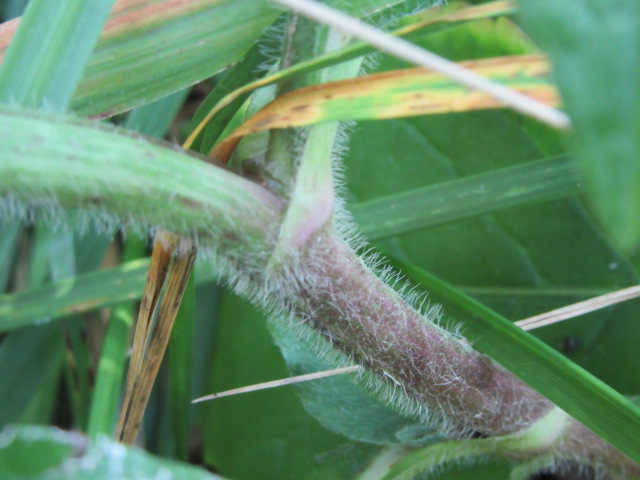
Elephantopus carolinianus (Leafy Elephant’s Foot) on 8-20-22, #906-8.

Elephantopus carolinianus (Leafy Elephant’s Foot) on 8-20-22, #906-9.

Elephantopus carolinianus (Leafy Elephant’s Foot) on 8-20-22, #906-10.

Elephantopus carolinianus (Leafy Elephant’s Foot) on 8-20-22, #906-11.

Elephantopus carolinianus (Leafy Elephant’s Foot) on 8-20-22, #906-12.
Photos from 2023

Elephantopus carolinianus (Leafy Elephant’s Foot) on 6-4-23, #943-45.

Elephantopus carolinianus (Leafy Elephant’s Foot) on 9-10-23, #960-32.
The summer of 2023 was very hot and dry. Many wildflower species fizzled out…

Elephantopus carolinianus (Leafy Elephant’s Foot) on 9-10-23, #960-33.